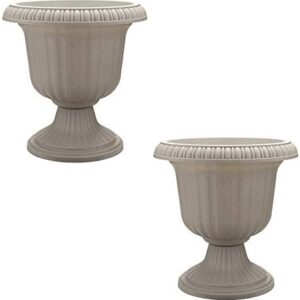From Cuttings to Seeds: Exploring Different Succulent Propagation Methods
So you’ve fallen in love with succulents and want to grow your collection even more. Whether you’re a seasoned plant parent or just starting out, propagating succulents is a fun and rewarding way to expand your plant family. There are many different methods for propagating succulents, but two of the most popular are from cuttings and from seeds. Let’s explore each method and see which one might be the best fit for you.
Starting with cuttings is a common and relatively easy way to propagate succulents. Many succulent species can be easily propagated from leaves or stems, making this method ideal for beginners. To start, simply select a healthy leaf or stem from the parent plant and allow it to dry out for a few days until the cut end callouses over. This step is crucial to prevent rotting once the cutting is planted.
Once the cutting has calloused over, it’s time to plant it in soil. Use a well-draining succulent mix and place the cutting in the soil, making sure it is buried about an inch deep. Water the cutting lightly and place it in a bright, indirect light location. Over time, roots will begin to form from the cut end, and a new plant will start to grow. It’s important to be patient during this process, as succulents can take some time to establish themselves and start growing.
Propagation from cuttings is a great way to quickly expand your succulent collection, as new plants can be ready to repot in just a few months. Additionally, this method allows you to create exact clones of the parent plant, ensuring that you will have the same characteristics and traits in the new plant.
On the other hand, propagation from seeds is a slower but equally rewarding method of growing succulents. Collecting seeds from your existing plants or purchasing them from a reputable source allows you to explore new varieties and create unique combinations in your succulent collection. While propagating succulents from seeds can be more challenging than from cuttings, it can also be a fun and educational experience.
To start, sow the seeds in a well-draining soil mix and lightly cover them with a thin layer of soil. Mist the soil with water to keep it moist, but be careful not to overwater as succulent seeds are prone to rotting. Place the seed tray in a warm, sunny location and be patient as the seeds germinate and start to grow.
Propagation from seeds allows you to experiment with different crosses and create new and exciting succulent varieties. While it may take longer for succulents to grow from seeds compared to cuttings, the process is incredibly rewarding and can lead to some beautiful and unique plants in your collection.
Whether you choose to propagate your succulents from cuttings or seeds, it’s important to remember that each method has its own advantages and challenges. Cuttings provide a quick and easy way to expand your collection, while seeds offer a more creative and experimental approach to growing succulents. Whichever method you choose, the key to successful propagation is patience, care, and a little bit of trial and error.
In conclusion, propagating succulents is a fun and rewarding way to grow your collection and explore new varieties. Whether you prefer the quick and easy method of cuttings or the slower but more creative approach of seeds, both methods offer unique opportunities to expand your succulent family. So grab your gardening gloves and get propagating – your succulents will thank you for it!






